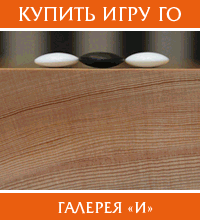This is the site of Cheboksary & Chuvashia department of Go Federation.
At the left side you can see a lot of links leading to the top Russian sites dedicated to the game of Go.
We are glad to invite you come into our Go images gallery. If you have any questions to discuss, please visit our International Go Weiqi Baduk Forum.
If you’d like to ask more about Go game, Weiqi and Baduk in Russia, please write: go(#)weiqi.ru.
In 1469 Cheboksary was first mentioned in written sources, when Russian soldiers passed here on their way to the Khanate of Kazan. According to archaeological excavations, however, the area had been populated considerably earlier. During the khanate period the town had the Turkic name C,abaqsar, and was populated by the Chuvash, Tatars and others. The current Russian and English names originate from this name.
In 1555 the Russians built a fortress and established a settlement here. In 1625 there were 458 soldiers quartered in Cheboksary, and in 1646 there were 661 males living in the settlement. At the end of the 17th century, Cheboksary was regarded as a major commercial city of the Volga region, and in 1781 it received the status of a city of the Kazan province. In the beginning of the 19th century the population was about 5500, the town had a sawmill and several small manufactures.
Cheboksary also was noted for its 25 churches and four monasteries, and Cheboksary bells where known in London and Paris.
In the 16th and first half of the 17th century the Vvedensky cathedral, four monasteries and eighth churches had been built, in the 18th century the stone buildings of treasury and archive, magistracy, court, and 10 churches. In 1880 here were counted 783 houses (33 of them from stone), 91 stores, three schools, two hospitals and a bank.
In the beginning of the 20th century, 5100 people were living in Cheboksary.
Like many Russian cities, Cheboksary possesses excellent cultural opportunities. There is an opera-ballet theatre, a philharmonic orchestra, and numerous theaters (showing productions in both Russian and Chuvash languages). However, a very popular gathering place for the locals is the recently completed zaliv (bay), beautifully situated in the middle of the city. There people gather to stroll, visit cafes, and socialize. Cheboksary also has beautiful boardwalks and beaches along the Volga River, where people swim in the summer. There are also a number of heated pools, health clubs, and museums (including Russia’s only beer museum).
Просмотров: 2 492
